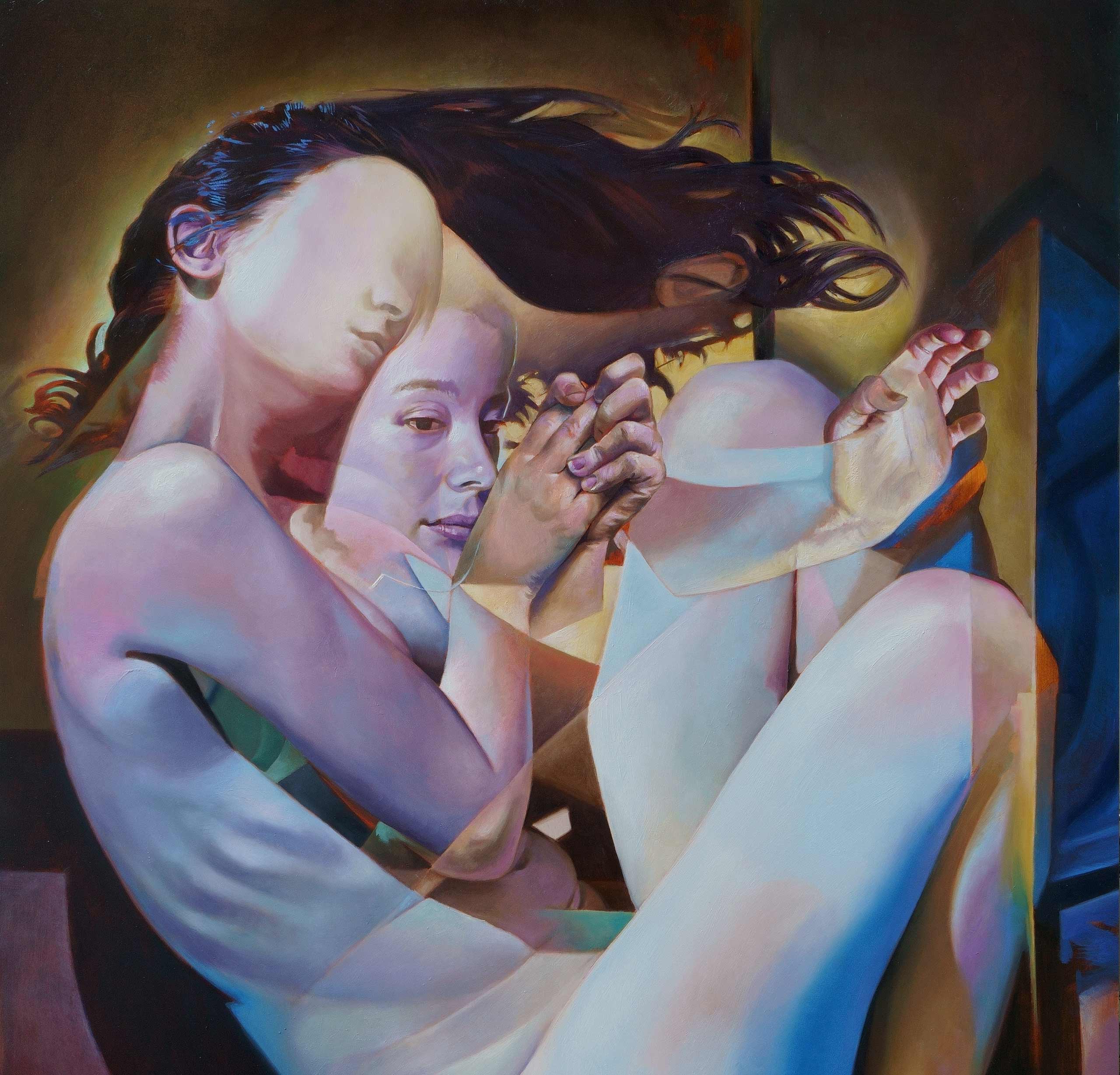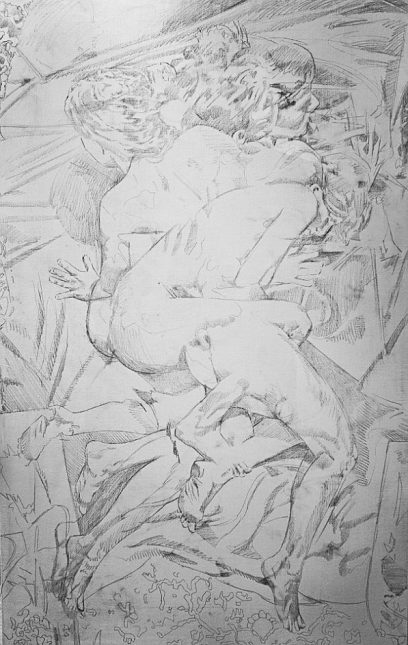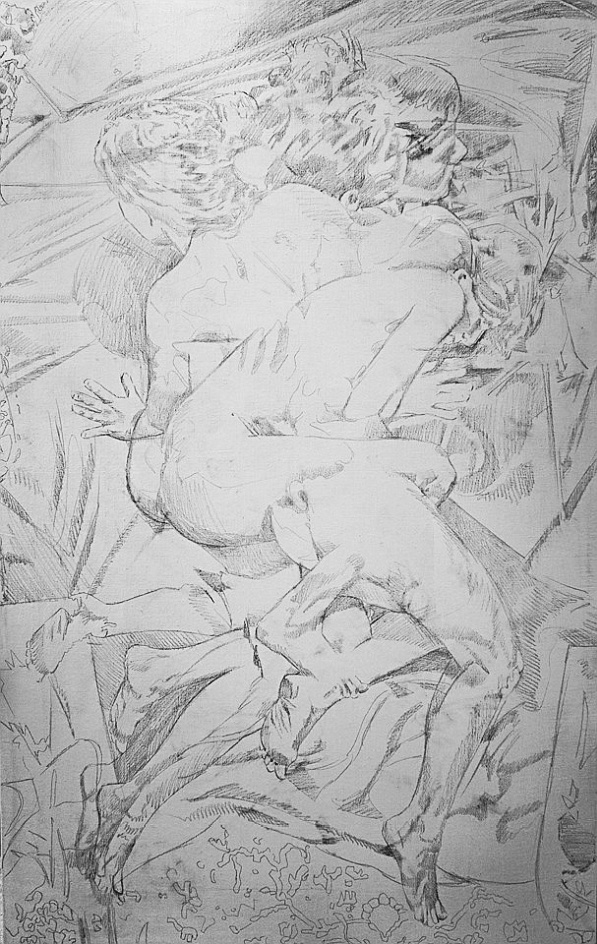
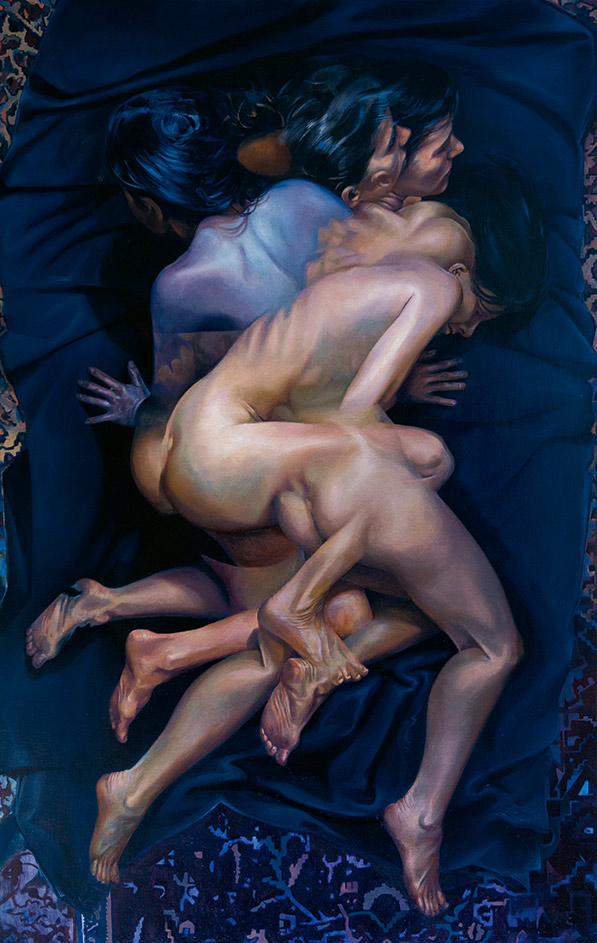
Yes and No
Use graphite in the preparatory drawing before you paint. However, the amount you use and the paint body may impact whether the graphite shows through. I have taught painting for 20 years and seen countless student paintings (easily thousands) over that time that had no issues with paint coverage over graphite marks. But I would also add that I have experienced a few examples where the initial graphite drawing could be seen peeking through the final painting.
What Does The Internet Think?
I suppose my own experience reflects why there are so many different thoughts on whether you should use graphite or not. And if you do, should you treat it before you paint? Do a quick Google search regarding the use of graphite as your preparatory drawing and you will find the answers that vary. Some claim that oil paint covers the graphite and to think otherwise is an urban legend, and other search results show explicit examples of graphite bleeding through. My thoughts on that in a moment.
Should you seal your graphite with fixative?
I have read a lot of posts that suggests the need to fix your drawing before you paint. However – from my experience – I see this as unnecessary. ( Not only do I not recommend using fixative ( or hair spray ) on any drawing, spraying this onto your canvas may be adding a substance with questionable archival quality. ) I find that using a thin medium such as liquin in my initial imprematura under painting will automatically embed the graphite into the canvas in which you then paint over once it has dried.
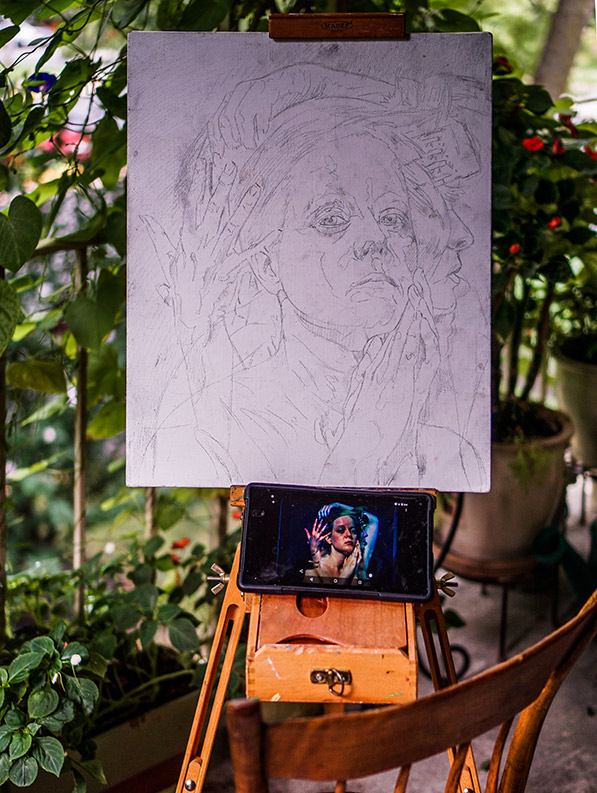
Final Conclusion? Go Ahead and Use Graphite.
Back to the issue at hand. Will a graphite preparatory drawing bleed through your oil painting? I can only speak to my own process. I use graphite and have never once had an issue. This does not mean you won’t either. Of course not, however, I have some advice and and bits of advice and thoughts on what may be causing some people to experience graphite creep or bleed through.
1) Your paint film is too thin
I see this often with painters early on. (Trying to blend with very little paint – and instead they sweep the paint off the canvas)
2) Not enough consecutive layers of paint are applied to the substrate
All of my paintings are at least 3 layers over the under painting.
3) Graphite is too heavily applied
I sometimes shade my preparatory drawings in graphite. However, I am not pressing into the canvas very hard. If you do it may create a reflective and slippery barrier that will resist the oil paint. Hence, if you choose to use graphite, I would recommend pressing softly. Be careful, don’t use too much!
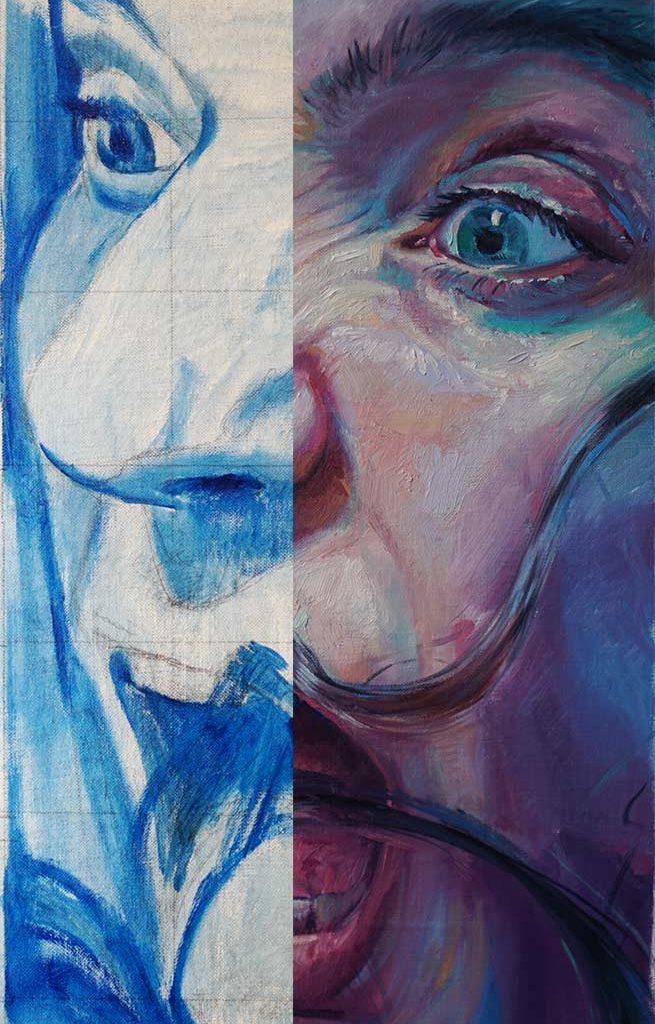
4) The amount of medium you use to thin the paint
I find liquin works well as an under painting medium. It locks in the graphite and it gets painted over in the next 3 layers.
5) The quality and opacity of the pigment you use
Less expensive student grade pigments have fillers in them and contain less pigment and may be less opaque as well. Also some pigments are naturally higher in oil content as well as some brands. This may also effect those that have a difficult time covering graphite.
6) Watch out if you use a grid to measure the proportions.
I find that the human eye can spot the pattern of the grid really easily. Be careful when you grid. Someone might be able to see it, and even if you paint thicker, it can sometimes be difficult to paint it out.
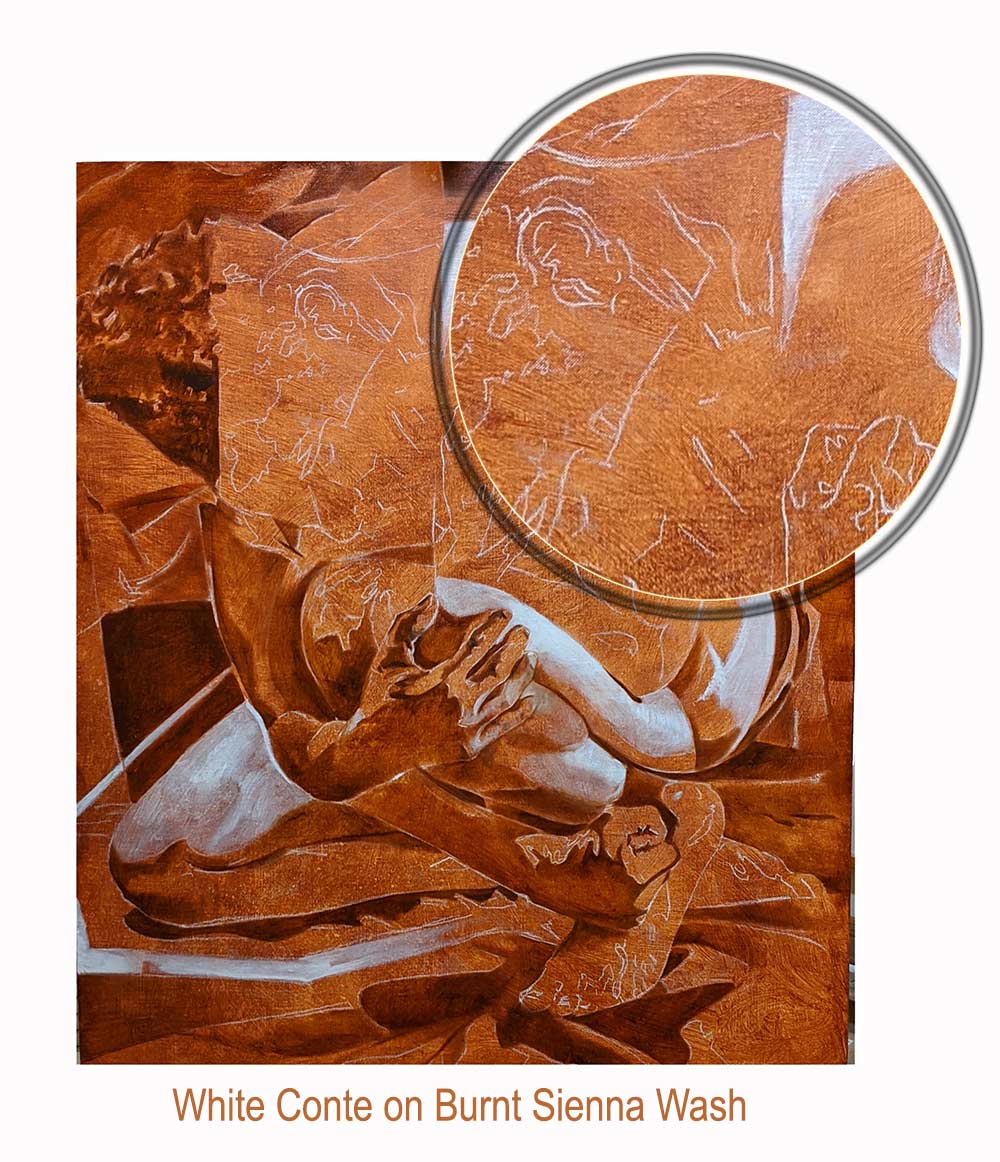
What are Some Alternatives to Graphite?
- Charcoal – Vine
A lot of artists use vine charcoal. It is a very powdery, easily erasable, soft and thin charcoal stick resulting from the burning of grape vines in a kiln without air.
- White Conte
A white and opaque chalk. It works well if you begin with a dark wash. It can be easily erased or washed off the surface of your canvas if you make a mistake. It will not effect your colors as they are applied on top.
- Silver Point
I have never used silverpoint as the under drawing. But I’m fairly certain it would work well! Especially if your substrate is rigid like wood or metal. Traditional silverpoint is made with a small fine rod of silver, such as jeweler’s wire, inserted into a wooden rod. When you draw, the line is created through the oxidation of the silver on the gessoed surface.
- Oil paint
You don’t have to do a drawing before you begin your painting. When I paint from life, I hardly do a drawing before I begin. Instead, I start right away and draw with paint. Using an Imprematura method of washes. Drawing is essentially done with oil paint.
